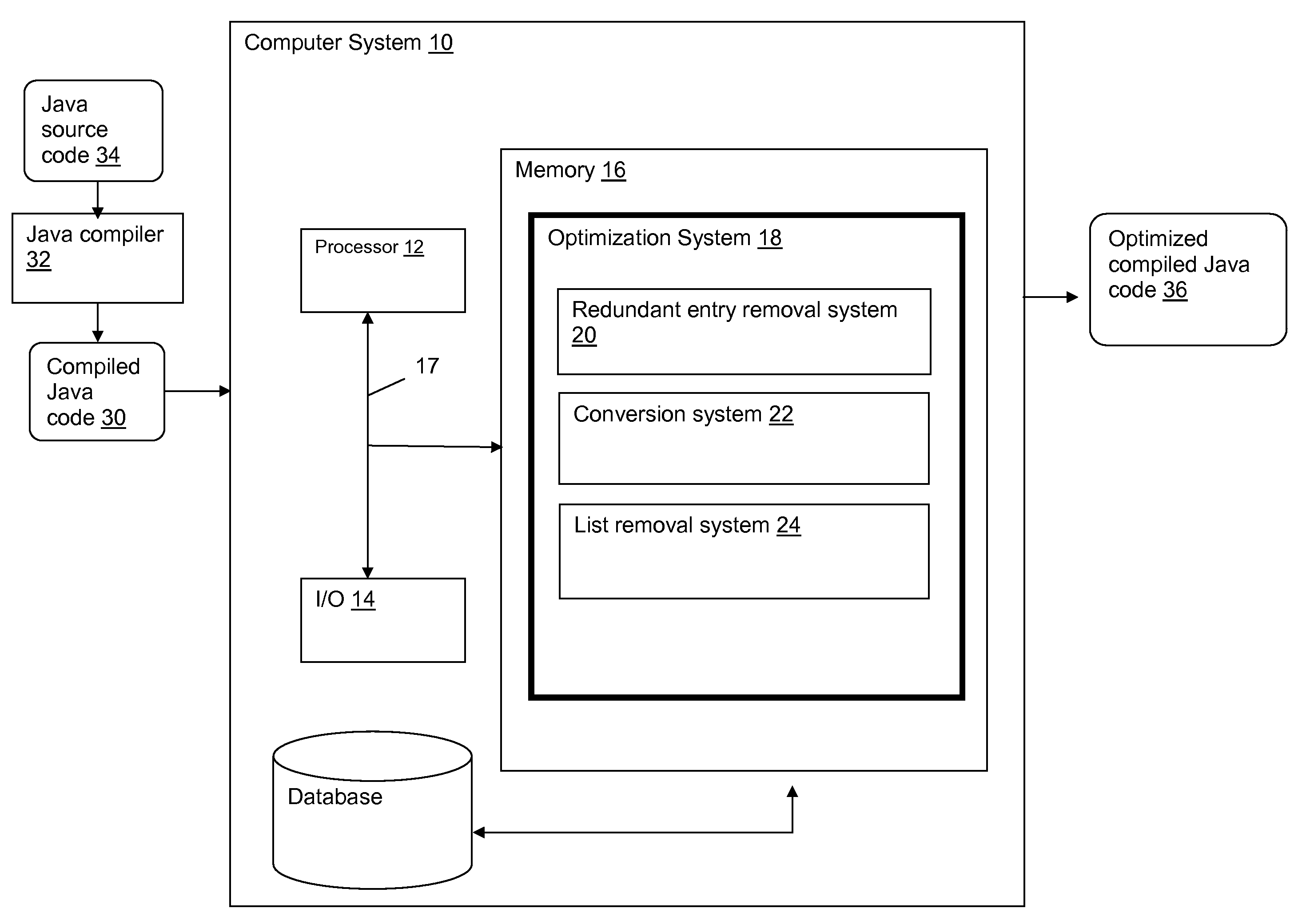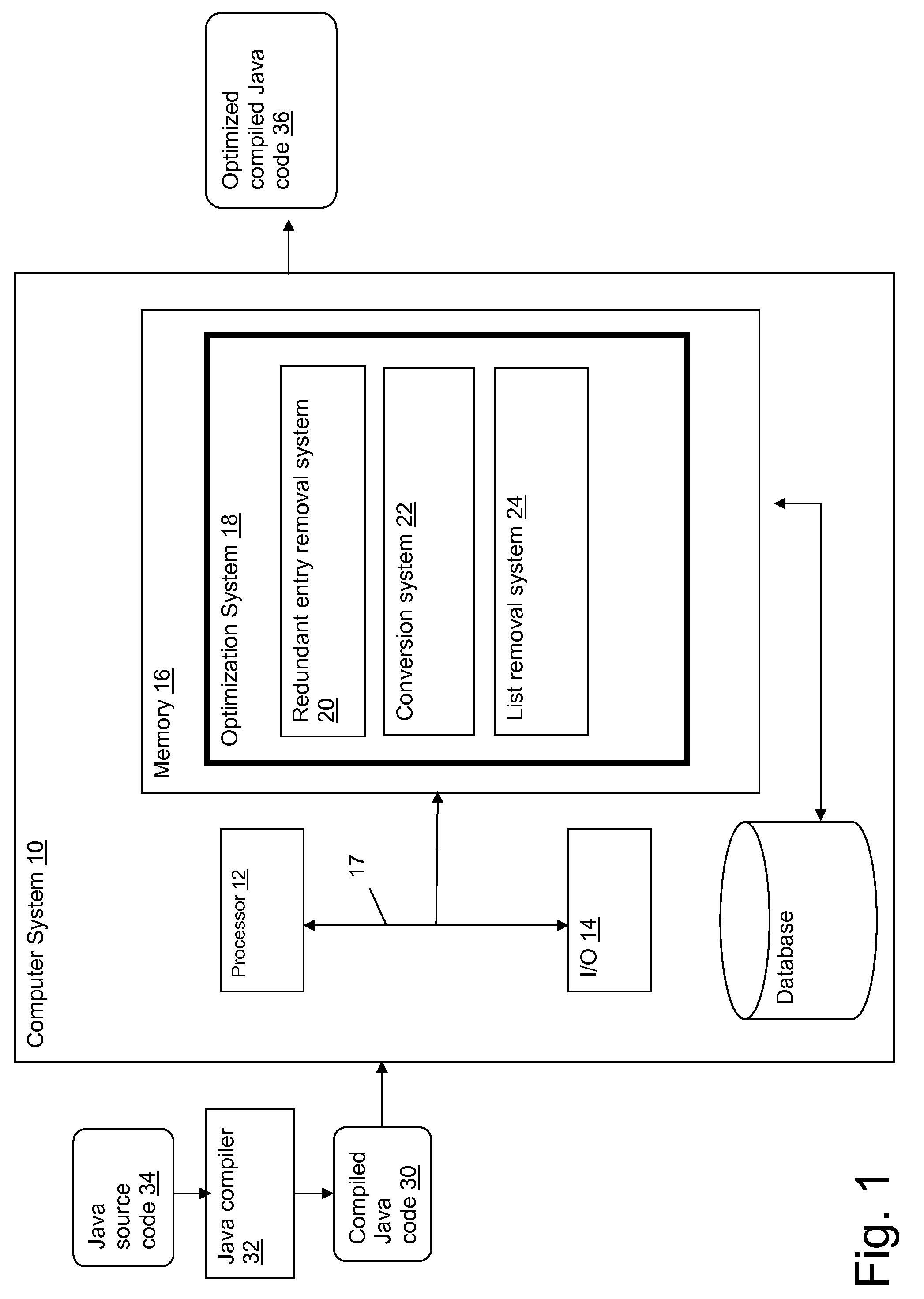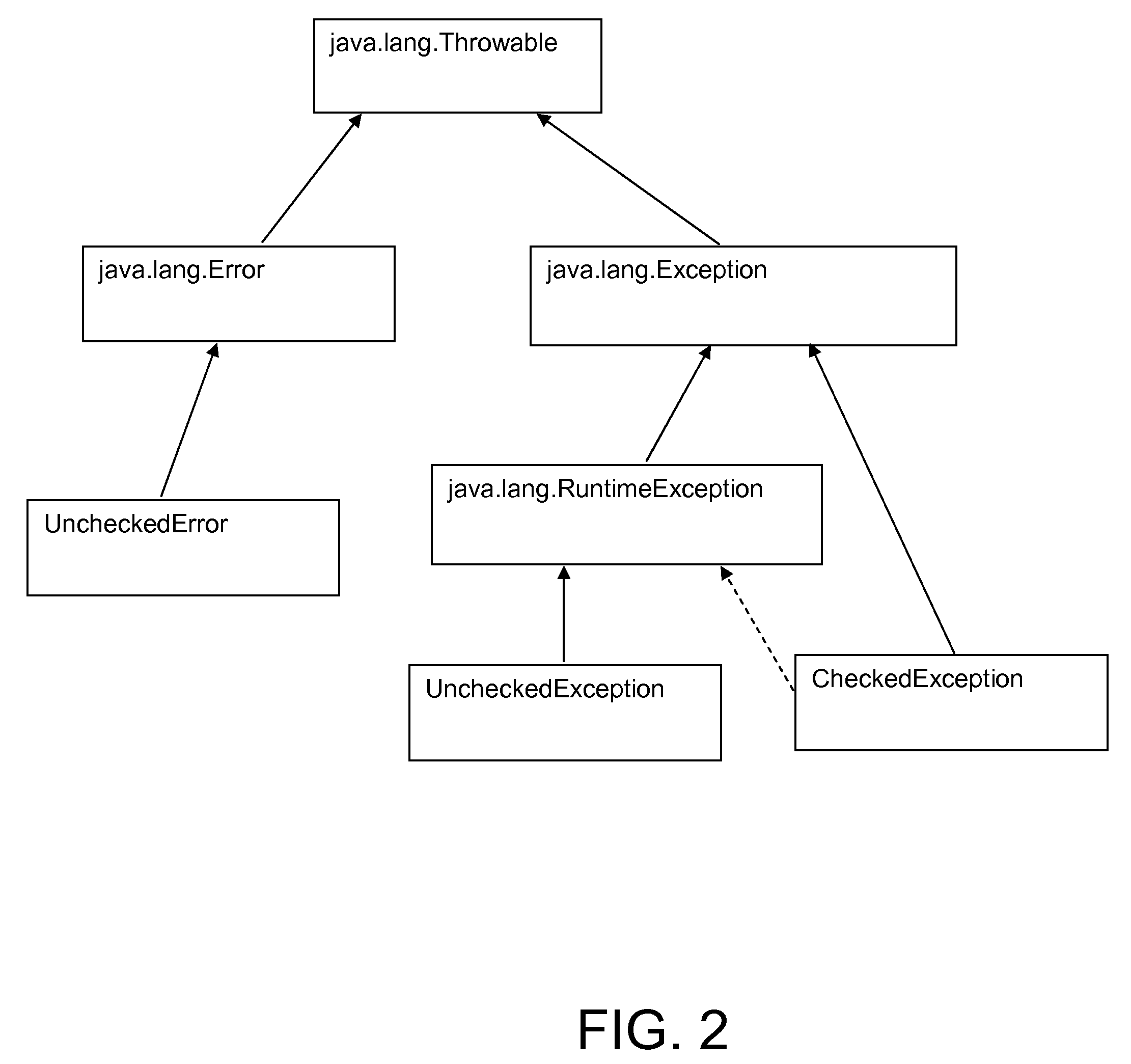Exception declaration refactoring to reduce memory footprint
a technology of exception declaration and refactoring, applied in the field of optimizing compiled object oriented code, can solve the problems of writing in object oriented languages, sacrificing program size for other efficiencies, etc., and achieve the effect of reducing memory usage and saving software deploymen
- Summary
- Abstract
- Description
- Claims
- Application Information
AI Technical Summary
Benefits of technology
Problems solved by technology
Method used
Image
Examples
Embodiment Construction
1. Checked and Unchecked Exceptions
[0014]An object oriented program consists of classes, each which contain methods (or functional members, or functions) that contain the instructions to run the program. Classes also contain data members (fields). Classes are “instantiated” in order to create objects. Each object contains its own set of data as specified by the data members of the class, and the functional members of any given object are capable of acting on the data members of the object.
[0015]Some languages allow for the “throwing” of objects, in which the execution stack of invoked methods is unwound due to an exceptional condition, until code that is capable of handling the exceptional condition is located. When a programmer chooses to throw an exception at a point in the code at which an exceptional condition has been detected in a given method, the programmer may choose either a “checked” exception or an “unchecked” exception. A “checked” exception is an exception for which ca...
PUM
 Login to View More
Login to View More Abstract
Description
Claims
Application Information
 Login to View More
Login to View More - R&D
- Intellectual Property
- Life Sciences
- Materials
- Tech Scout
- Unparalleled Data Quality
- Higher Quality Content
- 60% Fewer Hallucinations
Browse by: Latest US Patents, China's latest patents, Technical Efficacy Thesaurus, Application Domain, Technology Topic, Popular Technical Reports.
© 2025 PatSnap. All rights reserved.Legal|Privacy policy|Modern Slavery Act Transparency Statement|Sitemap|About US| Contact US: help@patsnap.com



